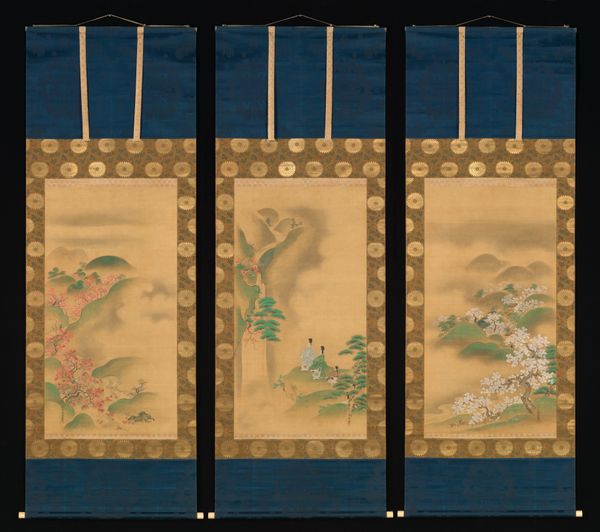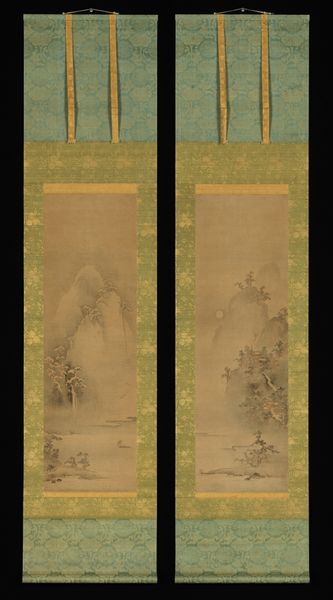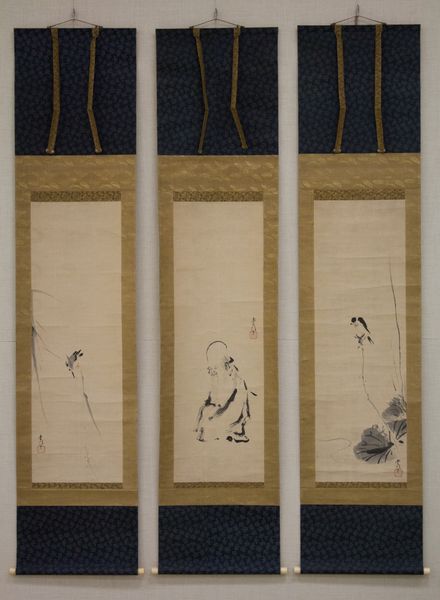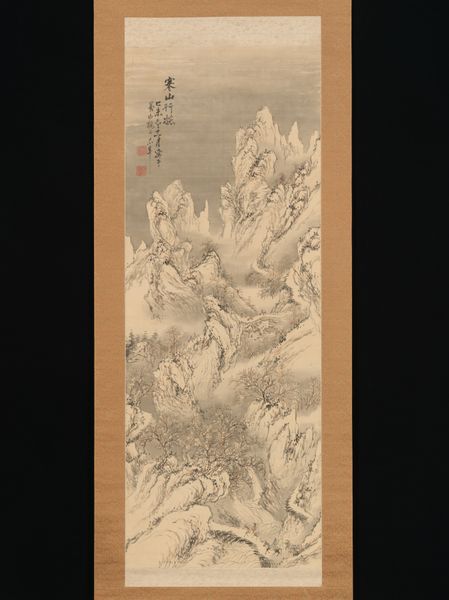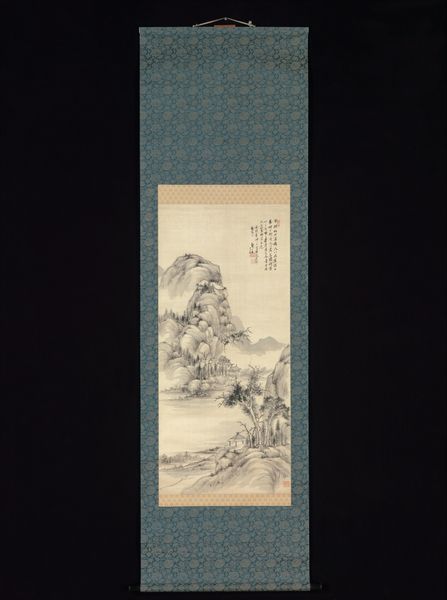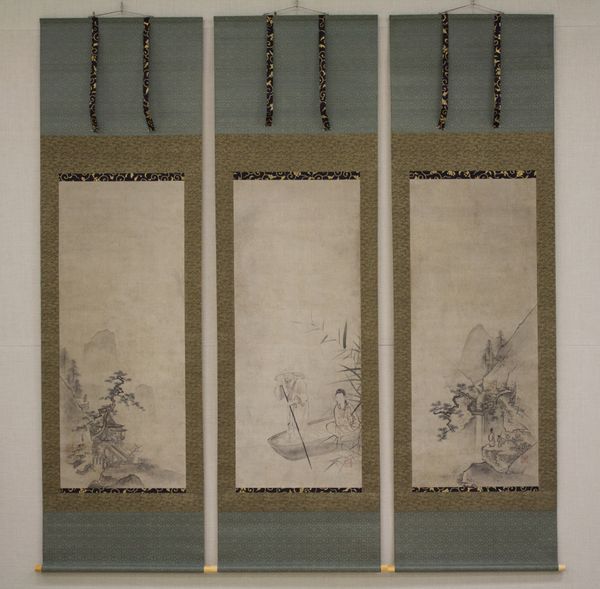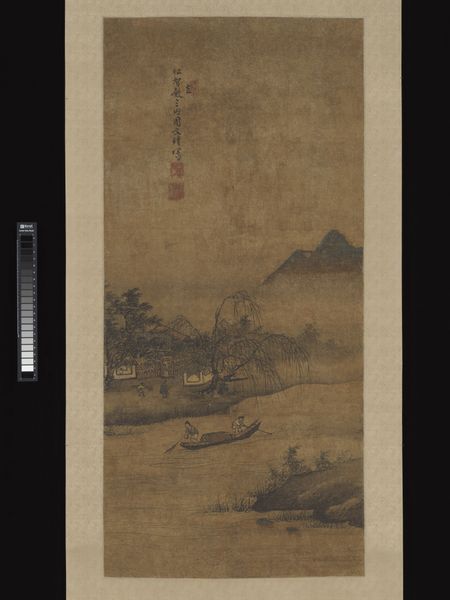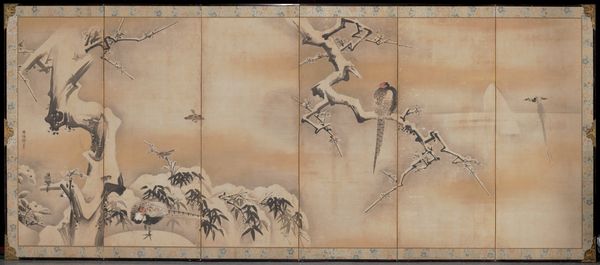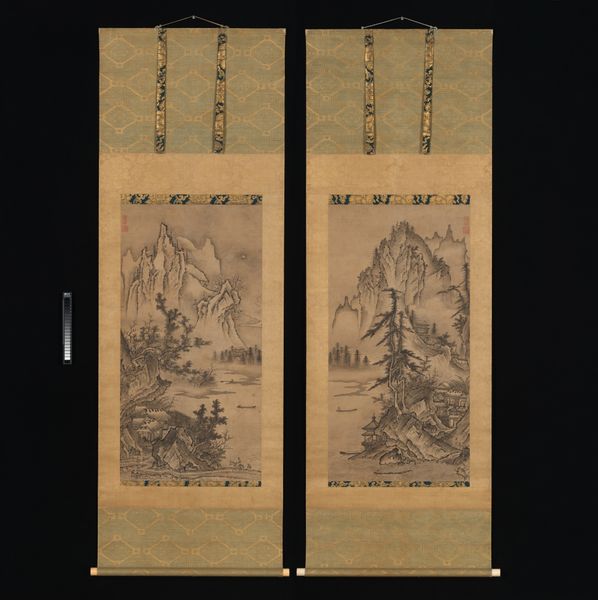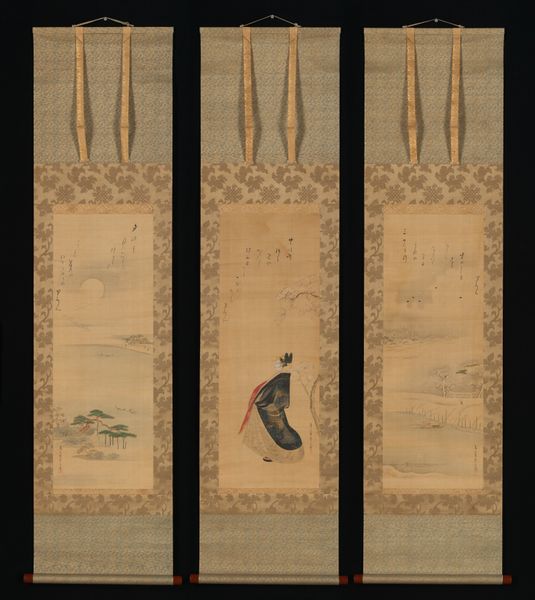
Zen Master with Meditation Staff, and Chinese-Style Landscapes 1626 - 1644
0:00
0:00
drawing, watercolor, ink
#
drawing
#
aged paper
#
asian-art
#
landscape
#
watercolor
#
ink
#
men
Dimensions: Each: Image: 42 3/8 x 16 7/8 in. (107.6 x 42.9 cm) Overall with mounting: 75 × 17 3/4 in. (190.5 × 45.1 cm) Overall with knobs: 75 × 19 3/4 in. (190.5 × 50.2 cm)
Copyright: Public Domain
Unkoku Tōeki created this set of three hanging scrolls, “Zen Master with Meditation Staff, and Chinese-Style Landscapes,” in Japan during the first half of the 17th century. They are made with ink on paper. Look closely, and you will see that the artist coaxed forth the images using controlled washes of ink, rather than laboured brushstrokes. This approach maximizes the paper’s absorbent qualities, its capacity to bloom and feather when wet. The effect is enhanced by the hanging format. The scrolls were meant to be displayed for a limited time and then rolled up, a process that would have gently burnished the paper. The choice of this medium speaks to the broader social context in which Tōeki was working. During the Edo period in Japan, there was a growing interest in Zen Buddhism, which emphasized meditation and mindfulness. Ink paintings like these were often used as aids to contemplation, their monochrome simplicity embodying the Zen ideal of emptiness. The artist's process, then, is not just a technique, but also a reflection of the spiritual values of his time. It reminds us that materials, making, and context are all essential to understanding the full meaning of an artwork.
Comments
No comments
Be the first to comment and join the conversation on the ultimate creative platform.
